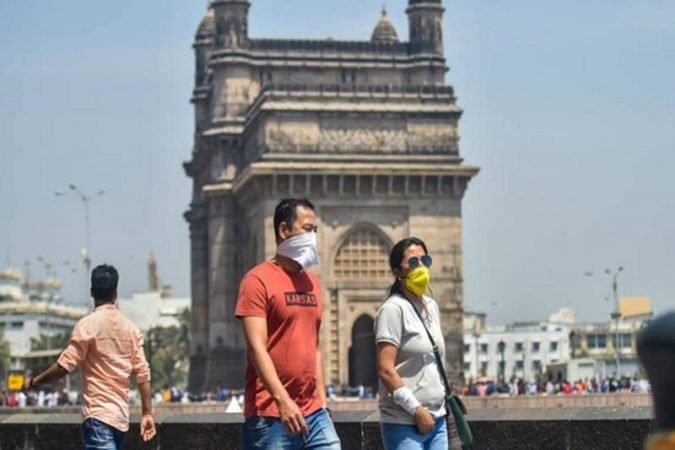Tourism in the post-COVID-19 world

“Agar firdaus bar ru – ye zamin ast,
Hamin ast o hamin ast o hamin ast” – Amir Khusro
On his deathbed, the late king Jehangir, when asked about his cherished desire, is purportedly said to have remembered and revered Kashmir, which has been defined beautifully by the Persian poet Amir Khusro. First, due to the insurgencies and constant fear that dilapidated the heartbeat of Indians, Kashmir seemed a far – fetched dream and now the COVID 19 pandemic has slowed the pace of development and tourism in what could have been the Kashmir 2.0. The travel & tourism business is on its knees worldwide. With country borders sealed, cities at a stand-still, grounded flights, cruise ships docked in harbours, trains stationary, no one is even thinking of a holiday, let alone planning for one. No one knows when the fury of the virus will abate; no vaccine is in sight; people are cloistered in their homes. Social distancing is the new mantra. Masks and gloves are the new safety accoutrements.
The coronavirus (COVID-19) pandemic has triggered an unprecedented crisis in the tourism economy, given the immediate and immense shock to the sector. Revised OECD estimates on the COVID-19 impact point to 60% decline in international tourism in 2020. This could rise to 80% if recovery is delayed until December. International tourism within specific geographic-regions (e.g. in the European Union) is expected to rebound first. Domestic tourism, which accounts for around 75% of the tourism economy in OECD countries, is expected to recover more quickly. India attracted 10.5 million foreign visitors in 2019, 5 million NRIs travelled back home to be with family and friends, 26 million Indians travelled within the country for holidays, pleasure and leisure and 18 million Indians travelled overseas for tourism. All of these statistics seem like a far cry today. New Zealand Prime Minister Jacinda Ardern called the choice between health and economy a false dichotomy: it is not a trade-off – if unaddressed, the long-term costs of letting the virus roam free will be much higher than the short-term pains involved in slowing the spread due to local transmissions. Country borders may not be open to all for some time. The movement of people across borders has come to a standstill in much of the world as countries have closed their borders to visitors – and sometimes their own citizens – in response to the coronavirus outbreak. At least nine-tenths (91%) of the world’s population, or 7.1 billion people, lives in countries with restrictions on people arriving from other countries who are neither citizens nor residents, such as tourists, business travellers and new immigrants. Roughly 3 billion people, or 39%, live in countries with borders completely closed to noncitizens and nonresidents. The situation may take many months to ease. The EU is likely to have a no-entry sign till September 2020. Even China, a previous staunch advocate of keeping borders open during the pandemic, has now effectively shut its borders to international travellers to ward off imported cases.

Some geographies may become a no-no for a while. Countries like Italy and Spain, even Germany and the UK, and of course the US, that have recorded large numbers of corona deaths may not have too many takers for tourism in the near future. As the world slowly turns back to normal it is very likely that international travel restrictions will linger on to avoid “importing” new COVID-19 cases. To support their tourism sectors, countries may purposefully restrict outward travel and encourage local tourism as a substitute (e.g. by easing private loans while the industry itself will work with price incentives). In essence, domestic travel and tourism will be expected to substitute foreign tourism demand, at least for the time being. For some countries, this will not nearly be enough, especially in terms of generating foreign currency revenues. With more than 9 out of 10 people in the world living in countries which have put in place cross-border travel restrictions15, the current pandemic is more global and will cover a much longer period than previous health-related crises. By comparison, crises such as SARS in 2003, the H1N1 outbreak in 2009, and MERS in 2015 were of a smaller scale and the impact on tourism was more localised. While the experience of these crises show how eagerness to travel was recovered quickly after health scares were under control and confidence restored, the widespread nature of the COVID-19 pandemic and the depth of the economic crisis it has triggered means that the tourism recovery will be slower.
Airlines have had to drastically reduce and in some cases ground their fleets and cease their activities, with extreme impacts on the short-term on employees and dependent activities. Cruise lines have faced the double challenge of ensuring visitor and worker safety, as some cruises were not able to disembark and repatriate clients, and losses in bookings and revenues. As people movement is limited or discouraged, including in countries which are easing restrictions, railways are seeing significant drops in revenues and passengers. Tour operators have reduced or halted operations until further notice as the pace at which the situation evolved increased organisational complexity, across administrative boundaries. Globally, hotels have reported having extremely low occupancy rates, or have experienced closures on a massive scale. Big hotel chains have seen their stock price plunge as a result. In Europe, it was estimated that 76% of hotels were closed. Around the globe, companies have cancelled or suspended business travel due to the coronavirus, in some cases until 2021. Events of all sizes have also been affected, including the 2020 Olympic Games.

The current crisis continues to affect travel and tourism businesses of all sizes, from the largest international airlines to the smallest independent hotel owners. The immediate response by these businesses has understandably focused on proactively designing plans for short-term survival. As the crisis evolves, the industry is now working with governments to identify key priorities and to facilitate recovery in the medium to long-term. A key concern and ongoing area of uncertainty for many tourism businesses across all parts of the sector are the conditions under which they will be allowed to reopen and operate, and whether it will be viable for the business to resume activities under these conditions. In response, industry actors have been proactive in proposing new operating standards and protocols, which seek to protect workers, restore travellers’ confidence, ensure social distancing, and put in place the necessary cleaning and hygiene standards.
Experiences will prevail over the physical. The lockdown and prolonged stay indoors has helped most people introspect. Most have decided to slow down or pursue passions long forgotten. In the COVID 19 pandemic too, it is the ability to cope with change, cope with the new normal, that will separate the men from the boys. Safety measures will have to be extraordinary for these are no ordinary times and the situation demands some stringent and smart measures. Businesses will provide discounts or reduced tariffs for the regular customers and a more hygienic routine will follow inclusive of sanitizers, masks and face shields. Like various cab companies have provided for segregation of the driver and the passenger, airlines have either introduced or made the mandatory wearing of face shields and gloves or the PPE kits, the tourism industry will have to accept this as the new normal and make it work in its favour. Clustered destinations like Rio de Janeiro will be avoided by people and even the ones who throng Europe in the latter part of the year, will reduce their sightseeing and limit the group to 2 – 3 people at the most. The business may take anything between 9 to 24 months to start climbing back to previous peaks. Family trips and business trips will be cut short and the focus for the ones who will travel will be on hygiene, isolation and clean work or stay places.
The Hindu way of life will be “the thing” for the post-COVID 19 world. The local cuisine and a special bend for the Chinese food per se will definitely reduce as people are not only aware and experimenting with a healthy lifestyle, but the fear for their dear lives has given a different perspective. The fear of getting infected, the fear of being isolated and the fear of a slow recovery has sunk deep into the hearts and minds of the people who are now more cautious than ever. Asian Cuisine is sure to take a hit, not just in European and American nations, but even for the foreign travellers who will be brave enough to walk and discover Incredible Indian and the Land of the Dragon. Hotels that will save on the sightseeing tours, will have to up their hygiene game and invest not just on sanitizers and face shields, but on healthy foods, accommodation and general cleaning services too. When the headwinds become strong and severe, some will succeed, some will struggle, some will perish. But, the wanderlust will be humanised and changed erratically to focus on Mother Earth first rather than satisfying their own needs and paving a way for their unquenched thirst. On the bright side, since fewer humans will loiter the streets and crowd the beautiful cities, nature will shine bright and welcome the wildlife to tour some of the majestic cities. Who knew humanity’s loss would be nature’s gain?


















